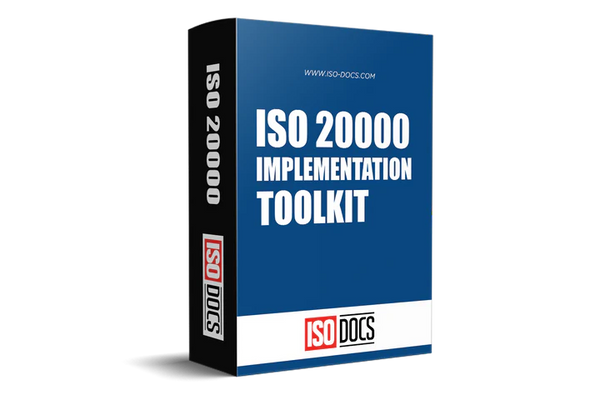ISO 20000 Service Level Management Template
What is Service Level Management?
Service Level Management (SLM) is a crucial process within the ISO 20000 standard for IT Service Management. It ensures all agreed service levels are met and maintained through proactive and reactive measures.
The SLM process covers the following areas:

- Service Level Agreements (SLAs) - Agreements between the service provider and customers that specify the levels of service to be delivered
- Operational Level Agreements (OLAs) - Agreements between the service provider and internal or external suppliers that specify the levels of service to be delivered
- Underpinning Contracts (UCs) - Contracts with external suppliers that specify the levels of service to be delivered
SLM is also responsible for monitoring and reporting on service levels and initiating improvement action when necessary.
Scope of Service Level Management ISO 20000 :
The scope of Service Level Management includes all IT services, whether internally or externally provided. Service Level Management also covers the management of service levels for individual components of an IT service, such as servers, networks, and storage.
To effectively manage service levels, Service Level Management needs to have a good understanding of the business goals and objectives of the organization, as well as each customer’s specific needs. Service Level Management must also be able to identify and monitor the key performance indicators (KPIs) most important to the organization and its customers.
The scope of SLM includes:
- Documenting, reviewing, and agreeing on service levels with customers
- Defining and deciding on the metrics and targets for measuring and reporting on service levels
- Clarifying and deciding on the Service Level Agreement (SLA)
- Monitoring and reporting on service levels
- Taking action to improve service levels.
The objective of the Service Level Management process :
Objectives
- Ensure that all agreed upon Service Level Agreements (SLAs) are met or exceeded.
- To provide visibility of all SLAs to all relevant parties.
- To review and update SLAs regularly.
- Ensure that any service changes do not adversely impact SLAs.
- To report on SLA performance.
- To investigate and agree with remedial action when SLAs are not met.
Value of Service Level Management :
Service Level Management has several benefits that can help an organization achieve its goals. Some of these benefits are:
- SLM can help identify and quantify the service levels the IT Service Provider must provide its customers. This information can then be used to develop appropriate service level agreements (SLAs) and operational level agreements (OLAs).
- SLM can help ensure that the IT Service Provider has the necessary capacity and resources to meet the agreed service levels.
- SLM can help monitor and review the performance of the IT Service Provider against the agreed levels of service. This information can be used to identify areas where routine needs to be improved.
- SLM can help identify any changes that need to be made to the levels of service provided by the IT Service Provider. This may be due to changes in the needs of the customers or the introduction of new or improved services.
- SLM can help provide a framework for continuous improvement of the levels of service provided by the IT Service Provider.
Service Level Management Workflow:

Principles & Basic Concepts of Service Level Management :
Service Level Management manages the SLAs and ensures they are met. This includes monitoring the service levels and taking corrective action if necessary.
There are four fundamental principles of Service Level Management:
- Customer focus
- Regular review
- Service improvement
- Communication
Customer focus
Service Level Management should be customer-focused, meaning that it should be based on understanding the customer’s needs and requirements.
Agreements should be made with the customer at the start of the relationship, and these should be reviewed and updated regularly to ensure that they continue to meet the customer’s needs.
Regular review
Agreements should be reviewed regularly to ensure they are relevant and meet customer needs.
Reviews should be scheduled in advance so that both parties have time to prepare and any changes can be made promptly.
Service improvement
Service Level Management should aim to improve the service levels being provided continuously. This can be done through regular monitoring and review of the service and customer feedback.
Service Level Management should also aim to identify potential problems impacting service quality and implement plans to avoid or mitigate these.
Communication
The communication principles process ensures effective communication between the stakeholders involved in the service-level management process. In addition, the process makes sure that relevant information is distributed to the appropriate parties promptly and that feedback is gathered and taken care of.



